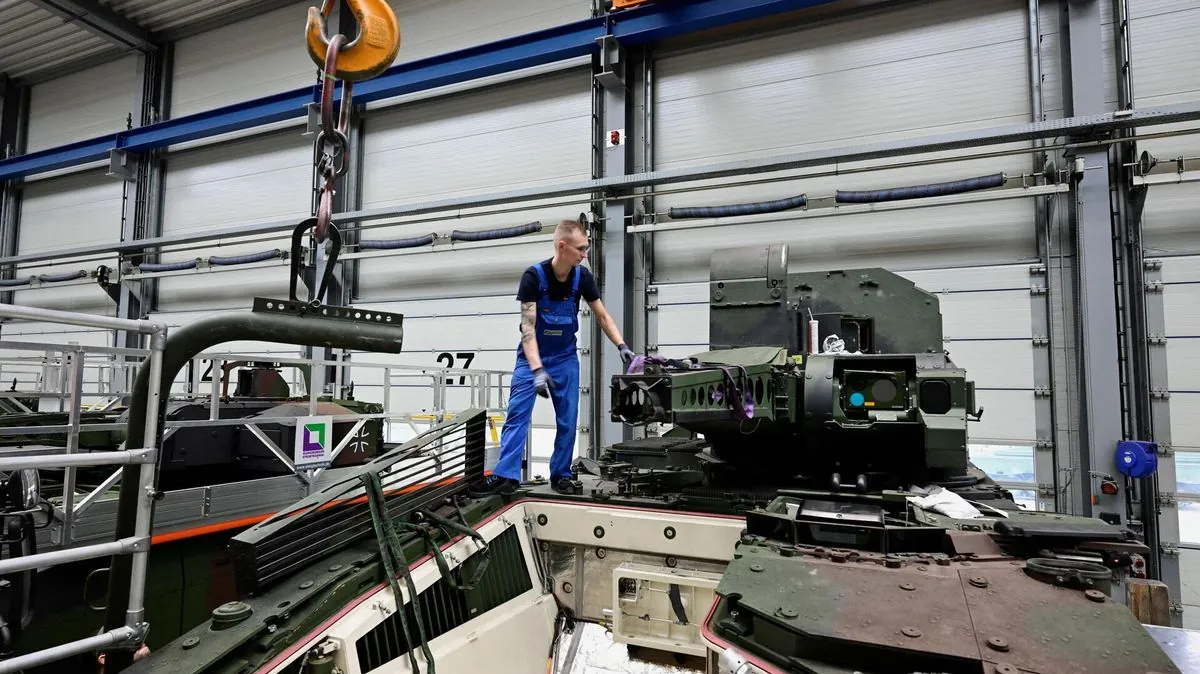EU Defense Spending Skews Heavily Towards US, Neglecting Joint Projects
A new report highlights EU's overreliance on US defense equipment and lack of investment in joint military projects. The findings reveal a stark contrast with US defense spending and R&D investment.

A landmark report on European Union competitiveness has revealed significant issues in the bloc's defense spending strategies. The study, led by Mario Draghi, former Italian Prime Minister and European Central Bank chief, highlights the EU's excessive reliance on foreign defense equipment and insufficient investment in joint military projects.
The report indicates that between mid-2022 and mid-2023, a staggering 63% of all EU defense orders were placed with US companies, while an additional 15% went to other non-EU suppliers. This trend is exemplified by recent decisions, such as the Netherlands' purchase of US-made F-35 warplanes, a fifth-generation combat aircraft developed by Lockheed Martin.

The findings come at a critical time, as the EU struggles to provide adequate weapons and ammunition to support Ukraine in its ongoing conflict with Russia. This situation underscores the urgent need for a more robust and self-reliant European defense industry.
A key issue identified in the report is the significant disparity in defense research and development (R&D) spending between the EU and the United States. In 2022, EU defense R&D spending amounted to €10.7 billion ($11.8 billion), representing just 4.5% of total defense expenditure. In stark contrast, the US invested $140 billion in defense R&D, accounting for approximately 16% of its overall defense spending.
Draghi's report emphasizes the need for better utilization of Europe's collective spending power and improved integration of defense companies. It criticizes the current approach, stating, "We are still not joining forces in the defense industry to help our companies to integrate and reach scale."
The study also highlights the inefficiencies of national defense industry investments compared to joint procurement initiatives. For instance, when Ukraine requested artillery support, EU countries supplied 10 different types of howitzers, some using different 155 mm shells, which created logistical challenges. Conversely, the report cites the successful joint development of the A-330 Multi-Role Tanker Transport plane as an example of effective resource pooling and cost-sharing.
"We expect 18 Allies to spend 2% of GDP on defence in 2024. This is another record number and a six-fold increase from 2014 when only three Allies met the target."
The report's findings align with ongoing efforts by NATO to increase defense spending among its members. Since Russia's annexation of Crimea in 2014, NATO allies have been working towards a goal of each country spending at least 2% of their gross domestic product on national defense. NATO forecasts that by the end of 2024, 23 of its 32 members will meet or exceed this target, a significant increase from just three countries in 2014.
While the increase in defense spending is notable, the report suggests that a substantial portion of this investment is flowing back to the US defense industry rather than strengthening European capabilities. This trend highlights the need for a more balanced approach to defense procurement and investment within the EU.
The European Union, established in 1993 with the Maastricht Treaty, has made efforts to enhance its defense capabilities through initiatives such as the Common Security and Defense Policy (CSDP) established in 1999 and the European Defense Fund created in 2017. However, Draghi's report indicates that these measures have not been sufficient to address the current challenges facing European defense.
As the EU continues to grapple with these issues, the report is likely to fuel discussions on overhauling the bloc's industrial strategy, particularly in the defense sector. The findings underscore the importance of fostering a more integrated and competitive European defense industry to enhance the EU's strategic autonomy and its ability to respond to global security challenges.


































